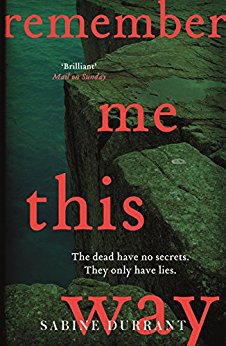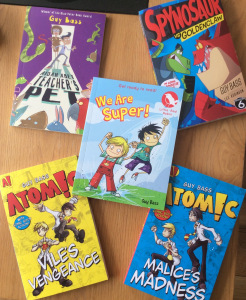The original Hand of Fate succeeded largely on the strength of its concept. It combined the rules of a roguelike with a deck-building card game to create something unique, and the devious, ever-present Dealer made the whole thing feel like a single-player Dungeons & Dragons experience where the Dungeon Master was actively trying to stop you. It was a great idea, but had some major issues that held it back from reaching its full potential. It was a good game crying out for a great follow-up; thankfully, Hand of Fate 2 has delivered just that.
In each of the sequel’s 22 missions, you select several encounter and equipment cards from your personal deck. These are then mixed in with the Dealer’s deck to form the card base you’re playing with. The cards are scattered onto a table face-down, although the shape and structure they form changes on a mission-by-mission basis. As you move across the table turning over one card at a time (usually either looking for or moving towards a specific card), you’re issued challenges that might or might not help you achieve the mission’s goal. The outcomes of several situations are dictated by games of chance and skill–rolling dice, perfectly timing a button press to an on-screen pendulum, stopping a spinning wheel at the right time–and there are various stats you need to follow and maintain, as your character can run out of money or starve to death. There are also several cards that throw you into combat, at which point the game briefly turns into a third-person action experience until all your enemies are downed (or you die, failing the mission).
While in the first game you were constantly on the hunt for the boss card, in Hand of Fate 2 there’s far more variety in objectives, and the game is better for it. You usually still have to find and kill a boss, but each mission now has its own gimmick. These can include challenging you to work out which character of three is plotting a murder, or tasking you with escorting an innocent potato farmer. Each mission has a strong sense of identity and purpose, and many of them are clever.
However, while the game gives you plenty of opportunities to escape bad situations or reasons to rethink your deck if your current plan isn’t working, the start-over-if-you-die structure can sometimes be excessively frustrating in certain scenarios. A prime example is the Justice mission, in which you travel around the 28 cards laid out on the table, gathering resources and dodging enemies through games of chance, continually traveling back to your base card to use said resources to strengthen your fort. It’s tremendous fun, but less so when you’re killed an hour into it, right at the end of one of the many, many intense battles you’ve been made to fight. It’s hard to pull yourself back into retrying a mission when these things happen. It also took me many attempts to beat the Strength mission, which starts you at low health and takes away your ability to heal by eating food. In a typical roguelike, where heavy randomisation makes the game feel different each time you enter, this wouldn’t seem like a big deal. But the individual missions in Hand of Fate 2 often ask you to fight the same battles repeatedly, and replaying the more difficult ones over and over is a strain. Thankfully, until you reach the very end, you’ll have multiple unfinished missions unlocked at any given point; if one is giving you grief you can usually jump into another.

Hand of Fate 2’s combat has gone through an overhaul. It discards the ineffective camera, clunky controls, and unclear parry cues for a system that feels much closer to the Batman: Arkham Asylum fighting system that so clearly inspired it. It’s not a unique system, and the game lacks variety in both enemies and tactical possibilities, but it’s now much more satisfying to take on a group of enemies. Parry and dodge cues are clear, and managing the timing of your attacks and moves requires active attention.
You can equip different weapons before battle, which are divided into three classes (heavy, two-handed, and one-handed), and what to equip largely depends on your opponent. Thieves, for instance, are weak against blade attacks, which do little damage but let you attack multiple times in quick succession, while several different kinds of guard are easier to fight if you’re carrying a one-handed sword and a shield. However, the more hectic battles can still be hard to read, and the quality of the fights may vary depending on which equipment you’ve managed to source during your journey–if you aren’t able to find or buy useful weapons, it can turn into a slog. Luck plays a big part in Hand of Fate 2, and while you can manufacture better luck with a good deck, there’s always the somewhat frustrating possibility that random chance will strike you down.

In most missions you’re joined by one of four unlockable companions who provide buffs during combat and specialize in improving your odds of victory in some specific circumstances. The mighty Colbjorn, for instance, can offer an extra die for you to roll should you need it in certain scenarios. These companions also add to the already rich incidental storytelling of the game. Playing through each mission, uncovering cards, and watching as conflicts and allegiances twist and shift depending on the story you’re pursuing at any given point gives you a strong sense of the game’s world, even if it’s largely confined to text. The Dealer, who is once again voiced by Anthony Skordi, is a treasure of a character, repeatedly referencing events from the first game and hinting at the dark secrets he keeps stored somewhere within his robes. He’s not an antagonist in the same way he was in the original game, and ultimately feels like a deeper, more mysterious character.
The moments of frustration in Hand of Fate 2 are worth enduring for the sweetness of its adventures, and getting to know the different cards and learning to build a deck that is perfectly suited for the mission you’re entering is satisfying. Hand of Fate 2 is a realization of the first game’s promise, and it’s exciting to play a game that blends seemingly unrelated elements together so well.
Share this:




